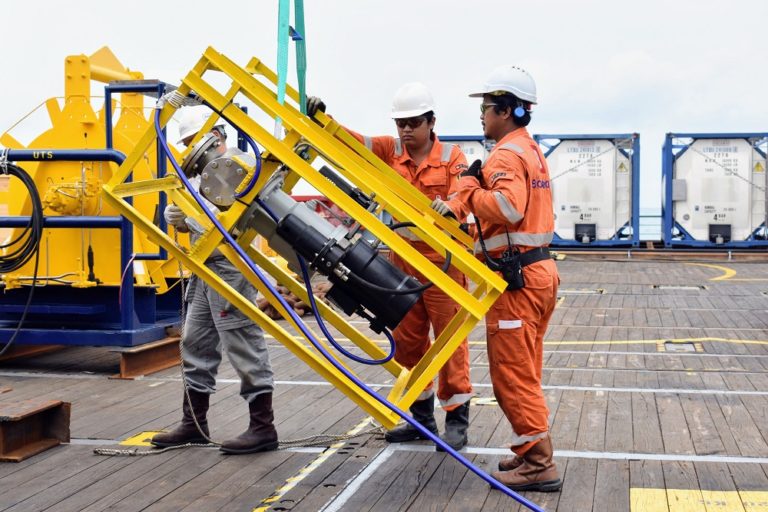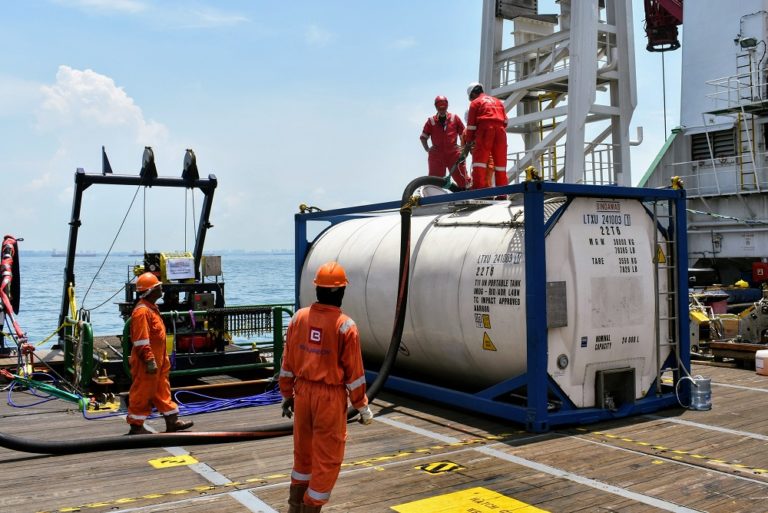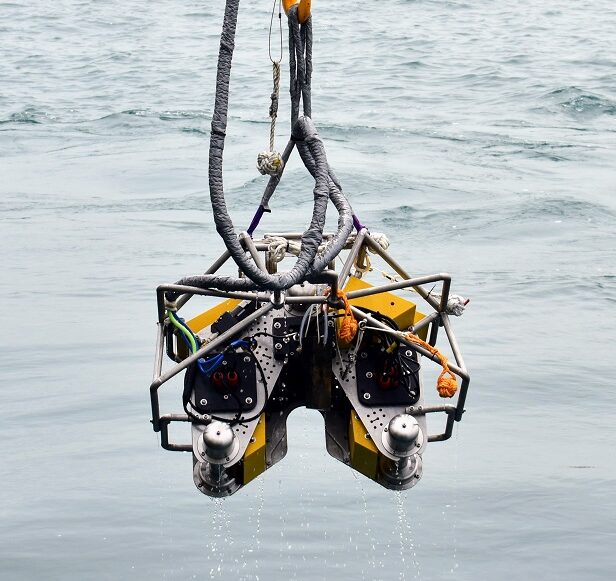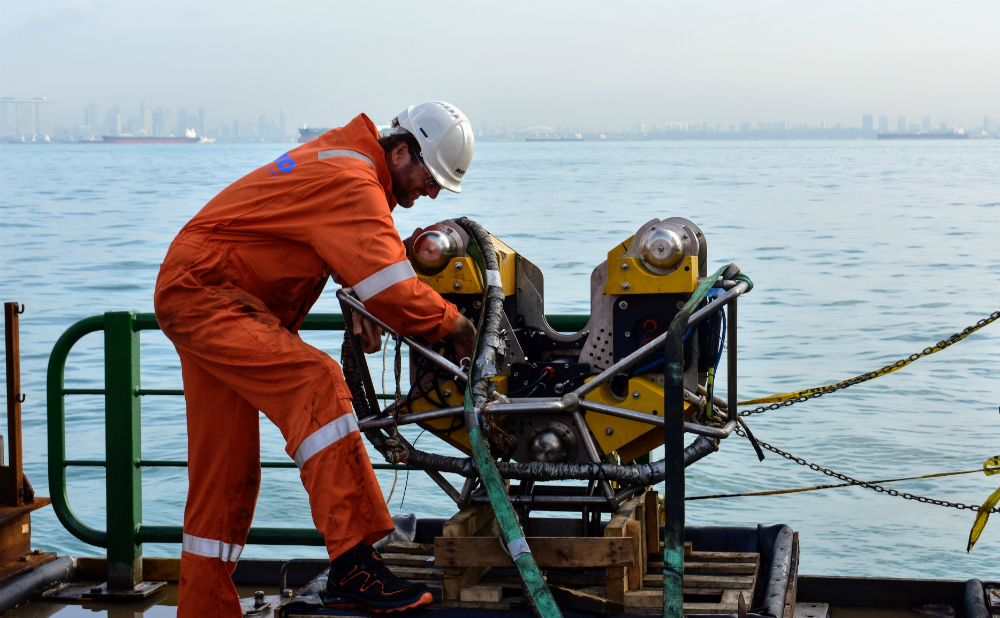A Miko Marine Moskito hot tap tool and oil recovery system has extracted 400 tonnes of heavy fuel oil from the tanks of the sunken general cargo vessel Thorco Cloud.
The wreck lies two sections 1730 metres apart and 70 metres down in the middle of the eastbound traffic lane of the Singapore Strait following a collision in December 2015. The heavy oil in the fuel tanks and in trapped compartments was seen as a major pollution hazard.
Both the bow and stern sections contained fuel tanks that required emptying so the Thorco Cloud’s owner, Marship GmbH, supported by the P&I insurance company Standard Club, contracted Jaya Salvage Indonesia as the salvage company. Bumi Subsea provided ROVs and the dynamically positioned Surf Allamanda, owned by Bourbon Offshore. This served as the work platform during the salvage of the trapped fuel by using the new hot tap tool developed in Norway by Miko Marine.
Thousands of sunken ships along the coast of Norway represent pollution dangers from the fuel trapped inside their hulls. This prompted the Norwegian Coastal Administration to invite Miko Marine to devise a method for removing it. The result was a unique tapping machine, known as the Moskito, that uses magnets to attach itself to the wreck before drilling through the hull plating and into the relevant tank. A ball valve and hose is connected to the drill bit and barrel of the Moskito and this prevents oil escaping through the drilled hole while the valve is closed during drilling. A hose for discharging the oil is connected to the drill’s valve before or after the hot tap operation has been completed. Attaching the Moskito to the vessel by magnets makes the drilling operation unique and this is further enhanced by its ability to create a leak-proof connection between the drill bit, ball valve and hose connector and the hull in a single operation. This is all controlled from a laptop on the surface and without the need for divers. An ROV or divers are only used for the positioning and recovery of the Moskito from the hull of the casualty or for making hose connections.
A high-resolution sonar scan of the Thorco Cloud wreck enabled the recovery team to work with naval architects’ plans and calculate the precise location of each tank and the optimum locations for inlet and outlet holes. ROV surveys then made close visual inspections to identify locations for penetration by using references to hull openings, visible frame numbers or other reference points on the hull sections. Once each penetration point had been identified, an ROV was used to clean and mark the area where the hot tap tool was to be located. The Moskito, was then positioned on the penetration point by ROV and strongly attached to the hull with its electro-magnets, activated by the Miko team on the Surf Allamanda. The Moskito operator then started the drill which can penetrate steel plating up to 25 mm thick. Once the puncture had been made, the cut disc fell into the tank and the operator sealed the drill bit and its barrel in place. The Moskito was then removed by the ROV for the next hull penetration, leaving just the drill bit with its ball valve and hose connection in-situ. A hose leading to a nearby submersible pump was then locked onto the drill unit by the ROV. The Miko team started the pump and the recovered oil was lifted to surface through a hose and into one of the ISO tanks on the deck of the Surf Allamanda. Flow was carefully monitored to minimize water intake and twelve tanks on the Thorco Cloud were tapped, enabling all accessible heavy fuel oil to be recovered at a rate of 10 – 15 cubic metres per hour.
Speaking after the completion of the project, Nicolai Michelsen, general manager of Miko Marine, was pleased that his company’s invention had been confirmed as a valuable solution to a difficult problem.
“There is an extraordinary number of ships around the coasts of Europe and elsewhere that were sunk during the second world war and many still have tanks containing heavy fuel oil,” he said. “After 70-years they are now starting to decay and cause unexpected deposits of oil on nearby coastlines. After much research and development work, I am pleased to say that our success with the Thorco Cloud has demonstrated that the Moskito system can now provide a cost-effective way for governments and coastal authorities to remove pollution threats to their coastal communities.”





